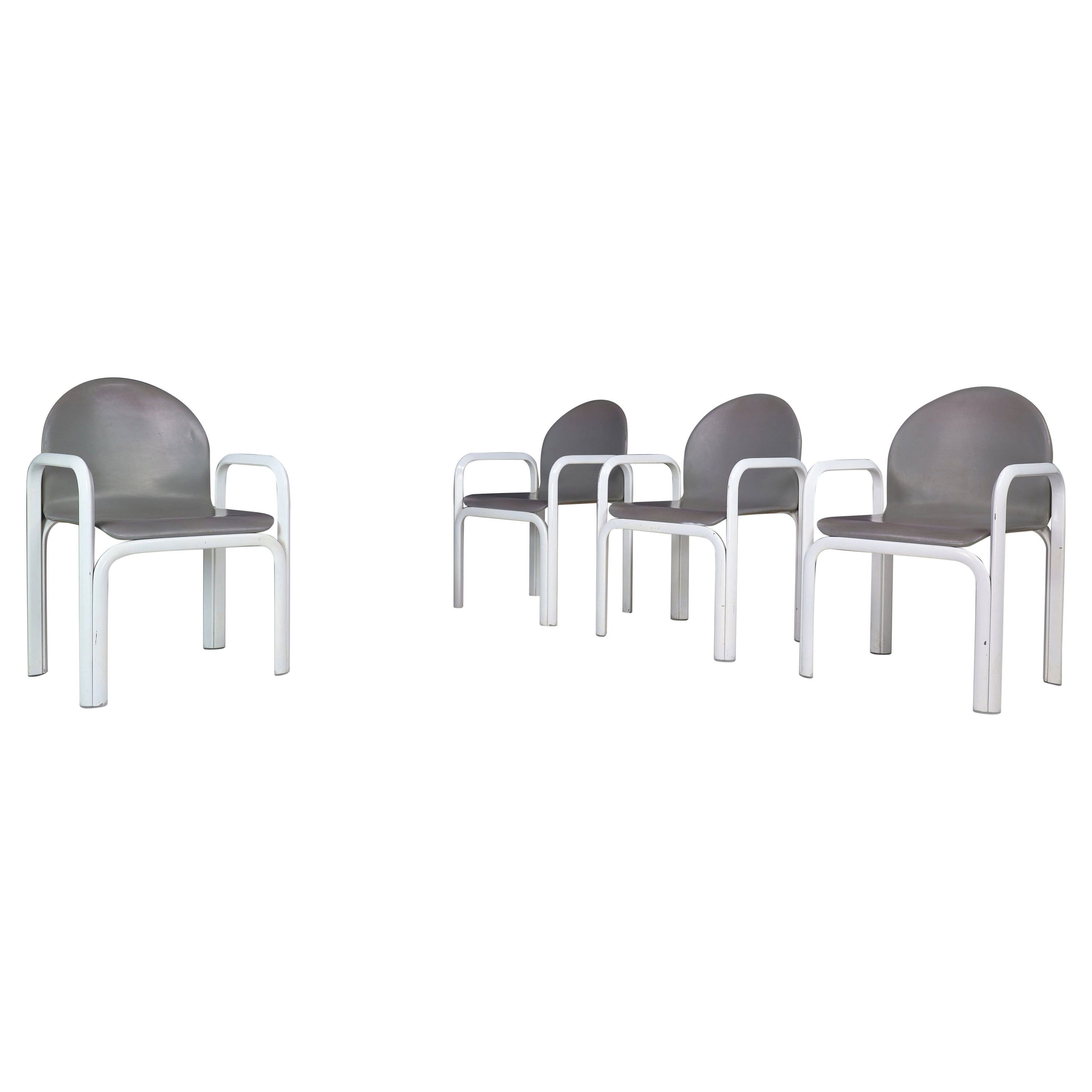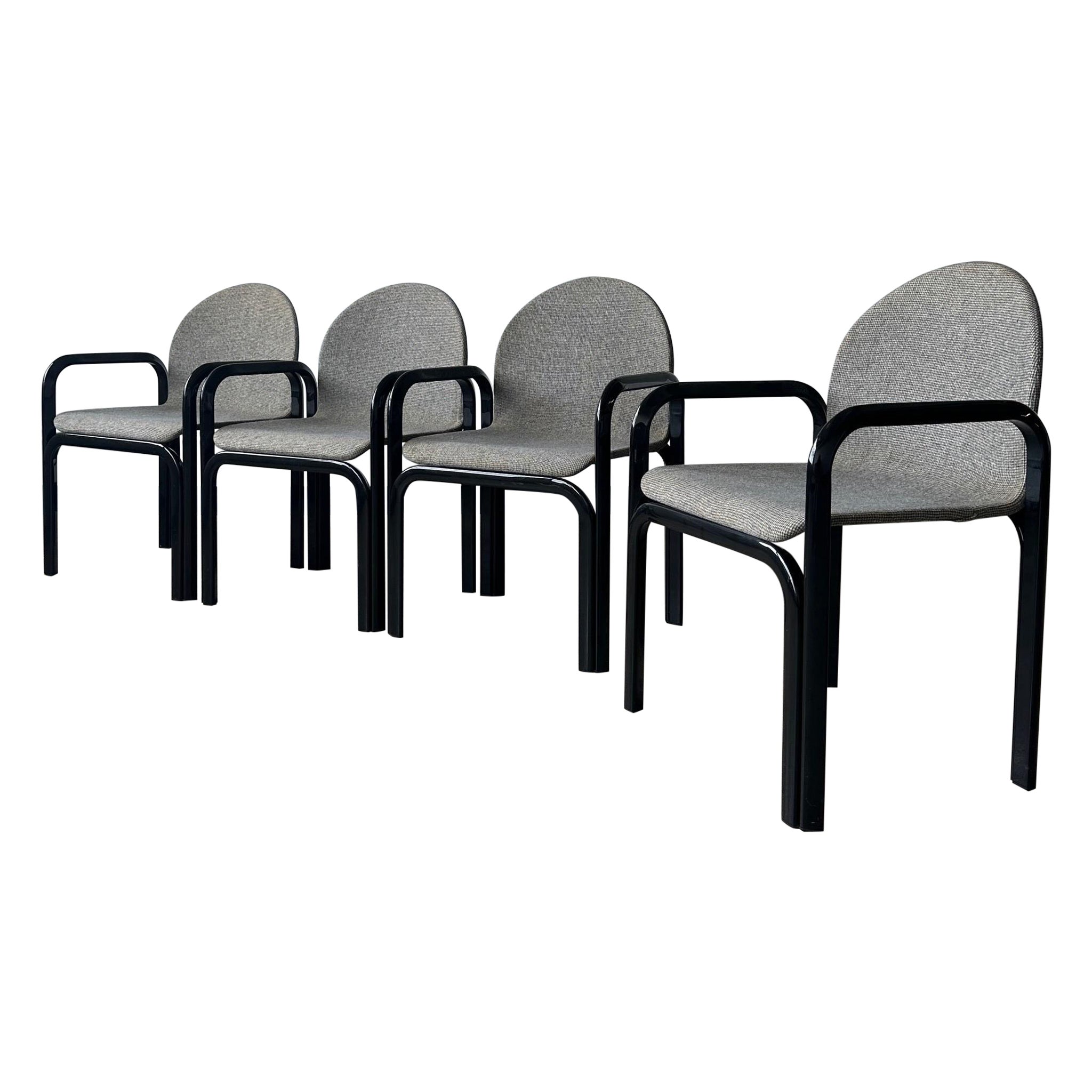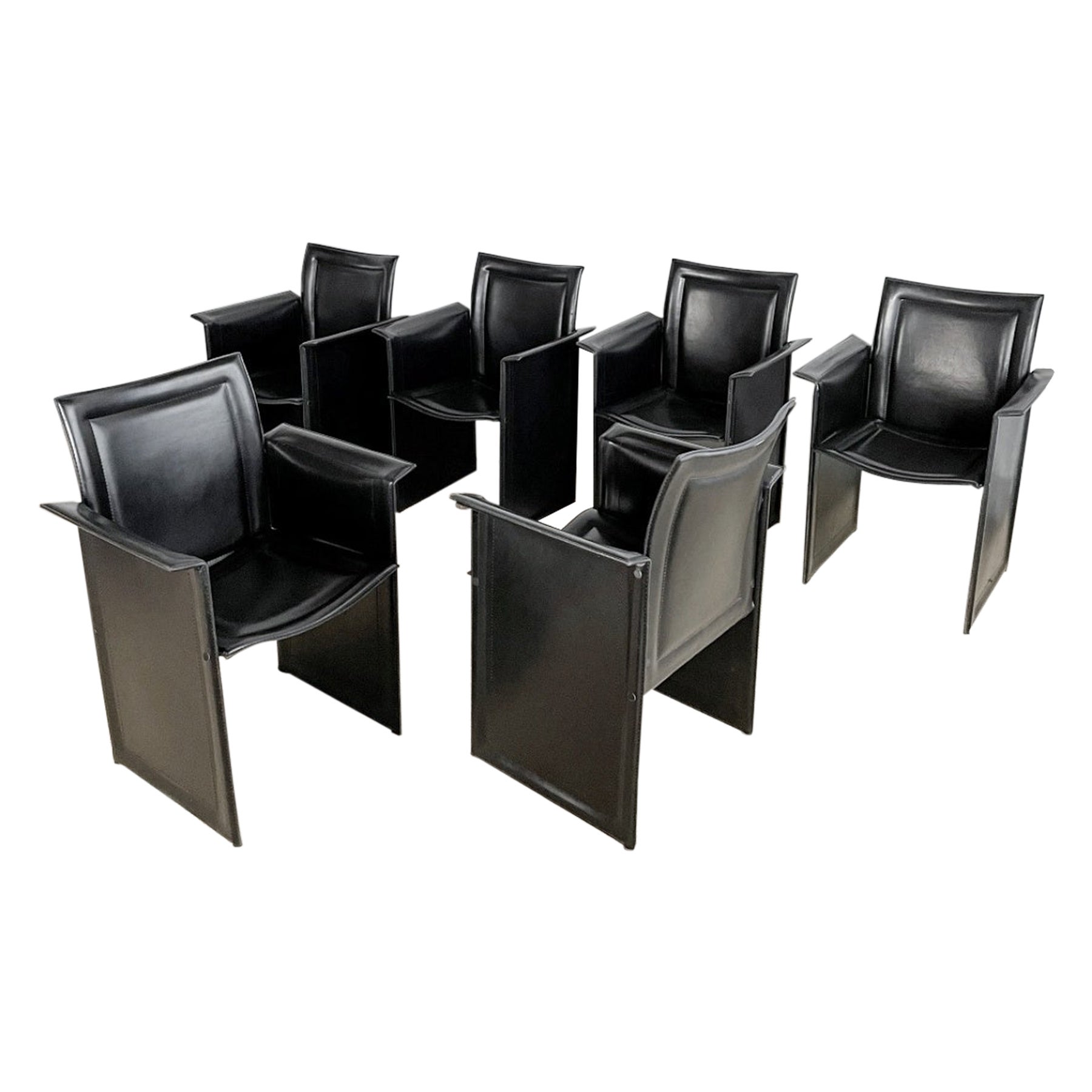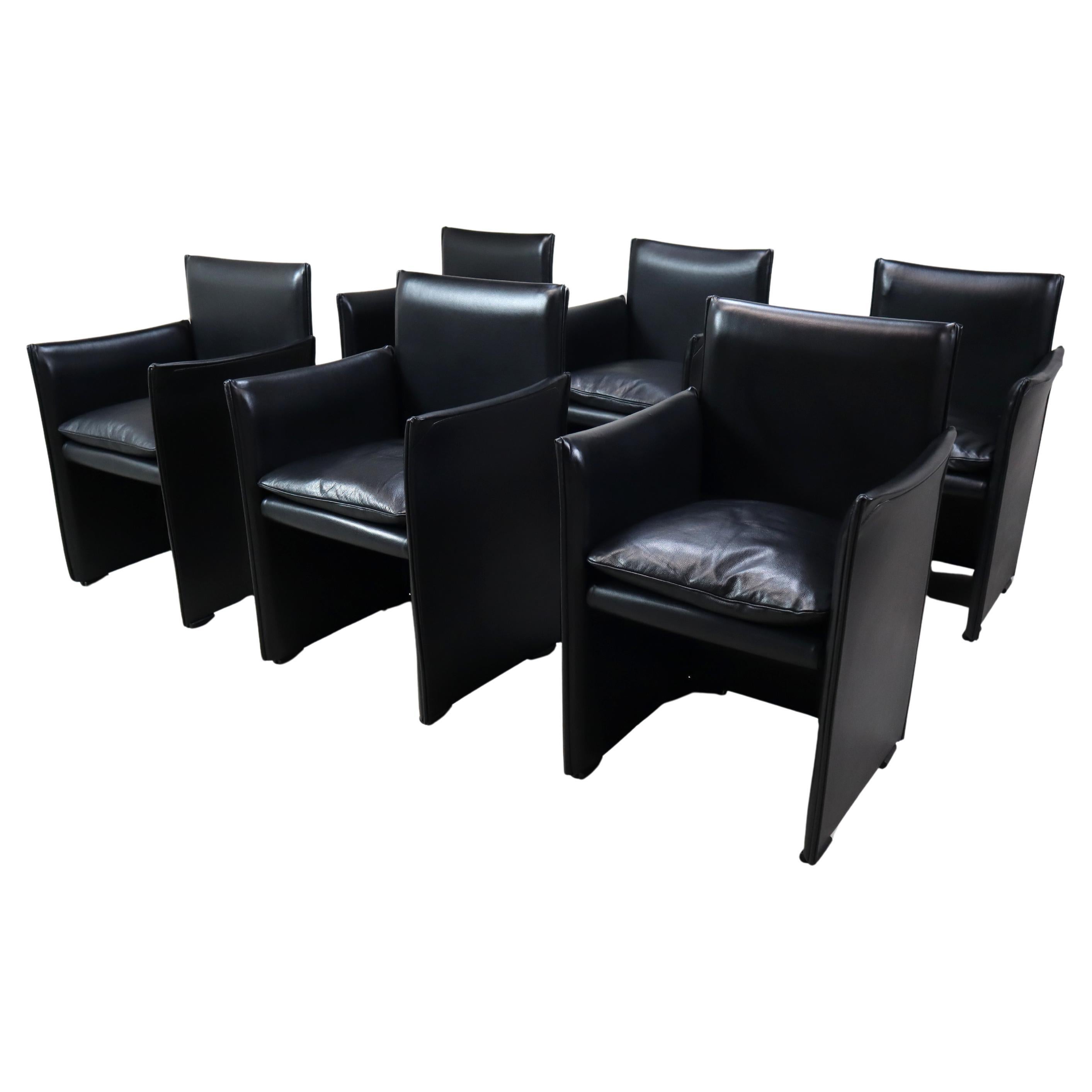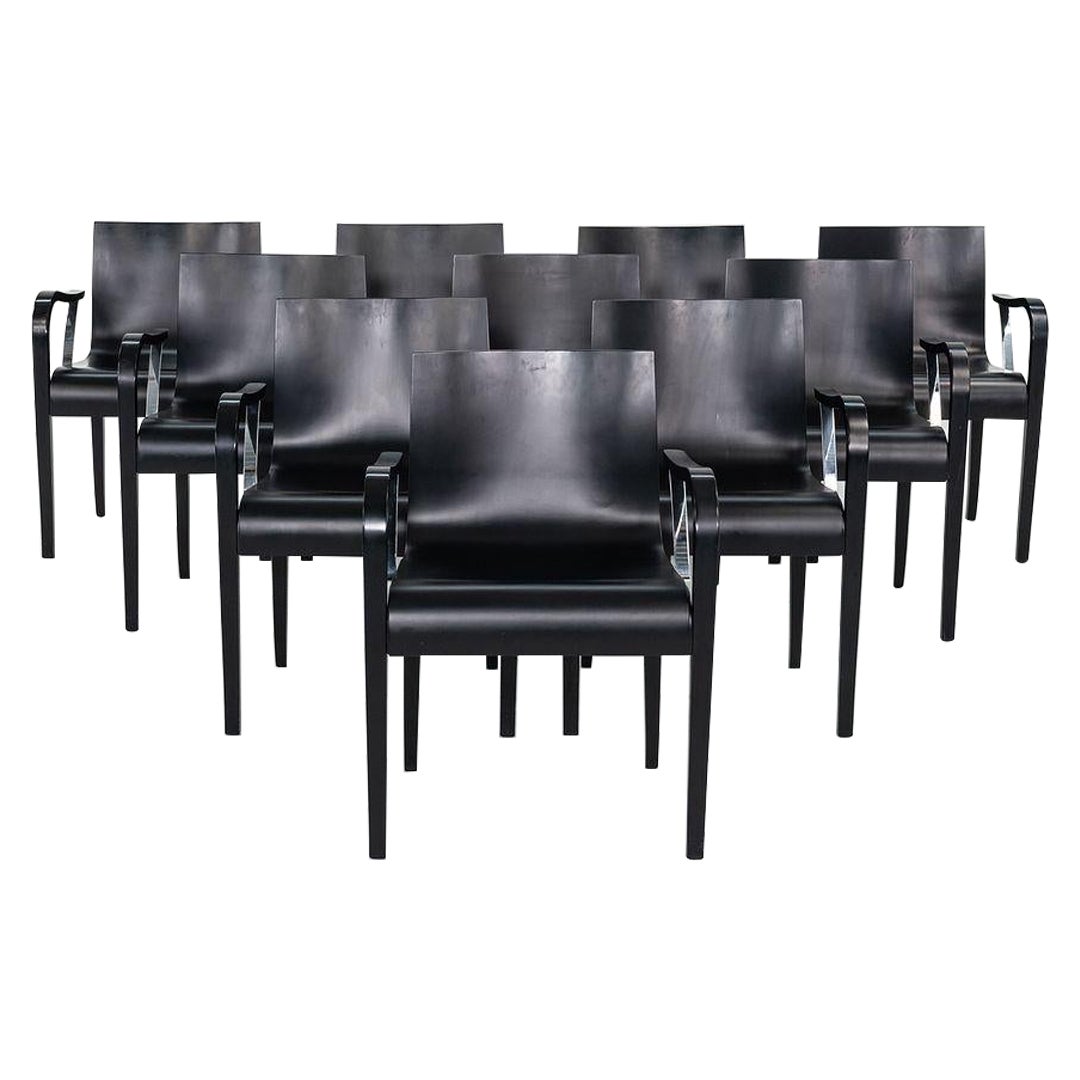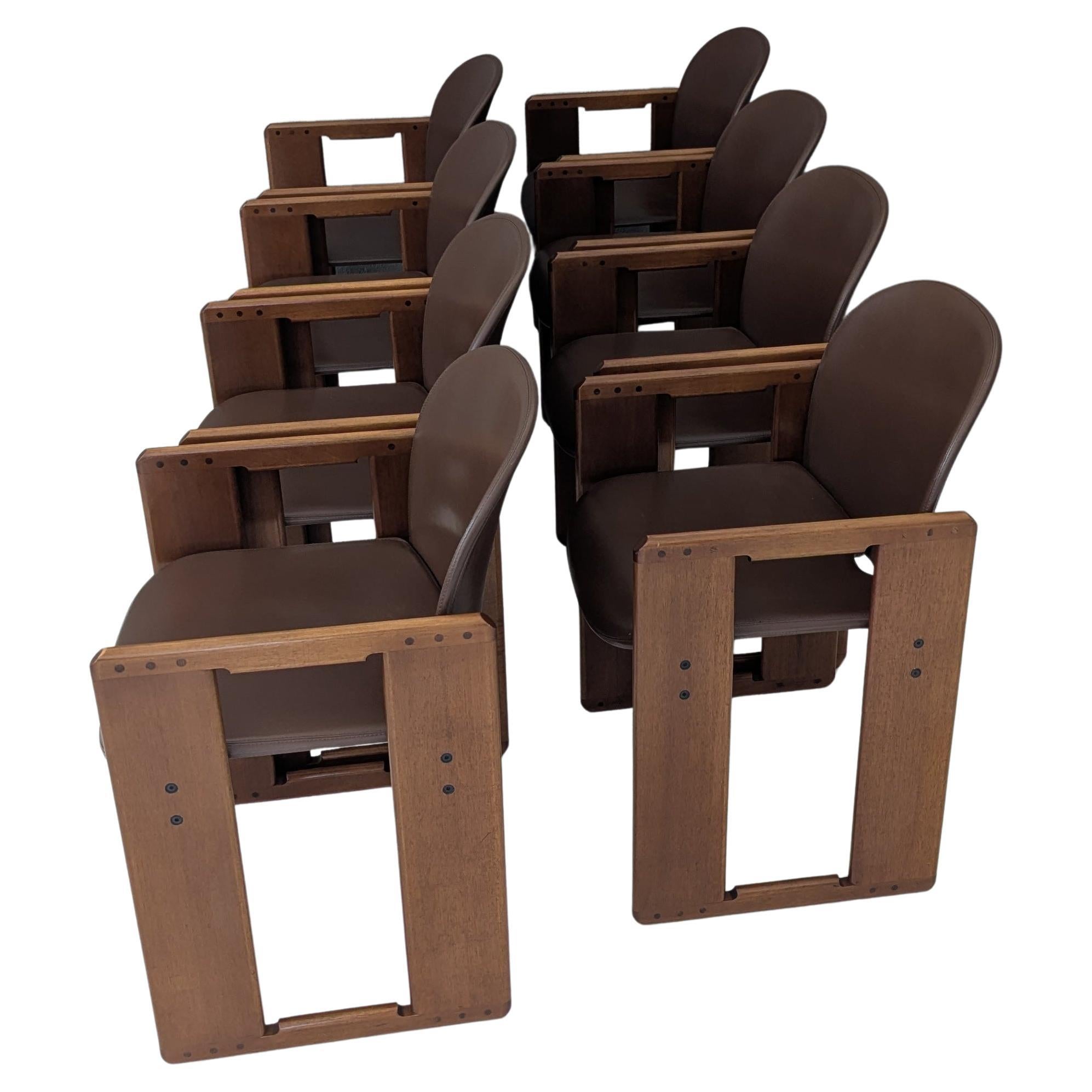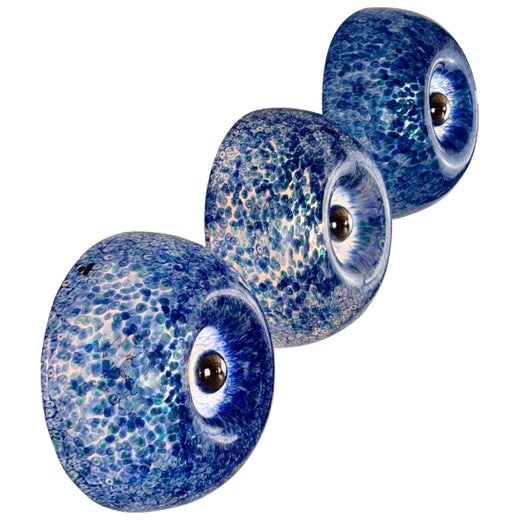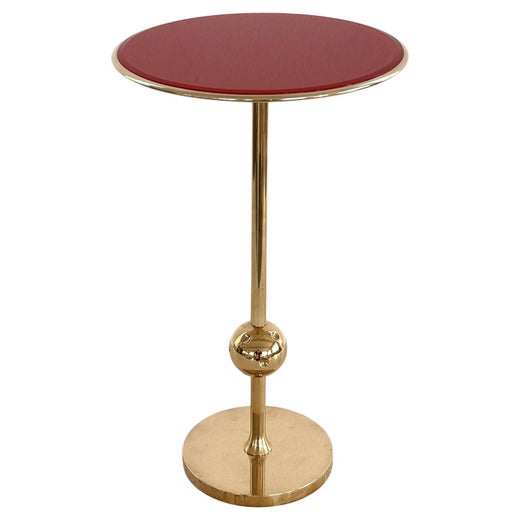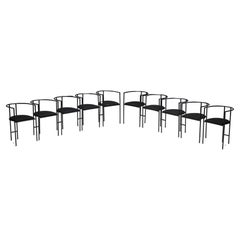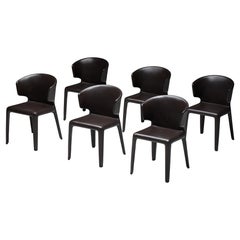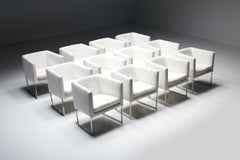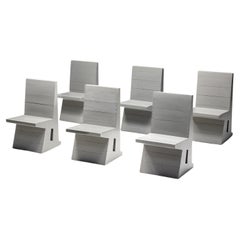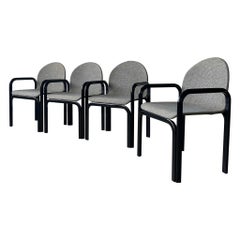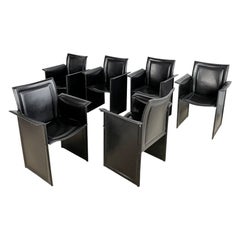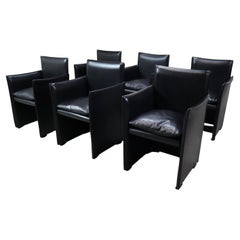Armchairs 'Tlinkit' by Gae Aulenti for Tecno, Italy, 1990s
About the Item
- Creator:Gae Aulenti (Designer),Tecno (Manufacturer)
- Dimensions:Height: 30.52 in (77.5 cm)Width: 24.41 in (62 cm)Depth: 22.84 in (58 cm)Seat Height: 17.72 in (45 cm)
- Style:Post-Modern (Of the Period)
- Materials and Techniques:
- Place of Origin:
- Period:1990-1999
- Date of Manufacture:Circa 1990
- Condition:Wear consistent with age and use.
- Seller Location:Antwerp, BE
- Reference Number:Seller: GW35641stDibs: LU933437174382
Gae Aulenti
The Italian architect and designer Gae Aulenti will forever be best remembered for her work with museums, in particular her 1980–86 renovation of a Beaux Arts Paris train station to create the galleries of the Musée d’Orsay. Aulenti — whose first name, short for Gaetana, is pronounced “guy” — should also be recalled for her tough intellectual spirit and for working steadily when few women found successful architectural careers in postwar Italy.
After she graduated from the Milan Polytechic in 1954, Aulenti opened an architectural office. She also joined the staff of the progressive architectural magazine Casabella, whose editorial line was that the establishment, orthodox modernism of Le Corbusier and the Bauhaus, had outlived it usefulness. When their movement for fresh approaches to architecture and design received a sympathetic hearing, Aulenti found patrons — most prominently Gianni Agnelli, of Fiat, who later employed her to renovate the Palazzo Grassi in Venice for use as an arts exhibition space.
Commissions for showrooms and other corporate spaces brought Aulenti to furniture design. She felt that furniture should never dominate a room. Her chairs and sofas — low-slung, with rounded enameled metal frames and ample seats — and tables, particularly her 1972 marble Jumbo coffee table for Knoll, project solidity and sturdiness. In lighting design, however, Aulenti is bravura.
Each work has a marvelous sculptural presence. Pieces such as her Pipistrello table lamp and Quadrifoglio pendant are a perfect marriage of organically shaped glass and high-tech fixtures. Others have a futuristic elegance — and some even have a touch of personality. Aulenti’s Pileino and La Ruspa table lamps each look almost like little robots. Her lighting pieces are an artful grace note in the career of a woman who believed in strength.
Find vintage Gae Aulenti armchairs, coffee tables and other furniture on 1stDibs.
Tecno
From his early start at his father’s boutique furniture and cabinetry atelier — Arredamenti Borsani (ABV) — Italian designer Osvaldo Borsani began to steadily dream to life the movement-inducing pieces that would eventually lead to him founding his innovative furniture company, Tecno, with his twin brother, Fulgenzio.
Born in the commune of Varedo in northern Italy’s Lombardy region, Borsani studied at the Brera Academy in Milan — the same school attended by such luminaries as designer Piero Fornasetti and artist Lucio Fontana — as well as the Polytechnic University of Milan. He first worked for the family furniture-making firm, ABV, an atelier influenced by the more expressive and curvaceous wing of Art Deco design. Borsani took over Arredamenti Borsani in 1937.
With his stylish and technically innovative furniture, Borsani helped change the face of Italian design in the 1950s and ’60s. His sofas and chairs, featuring deeply upholstered seating and adjustable position settings, have an aura of optimism and efficiency that still seems fresh and lively today.
While he is today recognized as a master of mid-century modernist Italian furniture, Borsani is most famous these days for cofounding Tecno. (He and Fulgenzio also created Villa Borsani, a visionary mid-century estate cherished for its modern lines and exquisite custom furnishings.)
When Borsani opened Tecno, an office-focused maker of industrial design, his design sensibilities had evolved toward furnishings with strong, simple forms enhanced by mechanical innovations, as with the P40 adjustable armchair.
When they were originally released, Tecno pieces like the P40 and the award-winning D70 sofa bed were acclaimed as cutting-edge, and they are still considered groundbreaking in their adaptability and functionality. The firm quickly garnered widespread acclaim for its tech-forward designs and quality craftsmanship.
Borsani would be Tecno’s lead designer for 30 years, while partnering on projects with the likes of architect Eugenio Gerli and fostering work by Vico Magistretti, Carlo De Carli, Robin Day and others.
Borsani designed pieces for Tecno until shortly before his death in 1985, when his daughter Valeria and her husband, Marco Fantoni, took over the creative work.
Today, the family’s legacy is preserved by Borsani’s architect grandson Tommaso Fantoni, who, along with Norman Foster, curated a blockbuster retrospective of Osvaldo Borsani’s work at Milan’s Triennale Design Museum in 2018.
Find vintage Tecno chairs, tables, desks and other furniture on 1stDibs.
- ShippingRetrieving quote...Shipping from: Antwerp, Belgium
- Return Policy
More From This Seller
View AllVintage 1980s Italian Post-Modern Armchairs
Metal
Early 2000s Italian Mid-Century Modern Armchairs
Leather
Early 2000s Italian Dining Room Chairs
Chrome
Vintage 1960s Dutch Mid-Century Modern Chairs
Wood, Pine
Early 2000s Italian Mid-Century Modern Dining Room Chairs
Leather
Vintage 1980s Italian Post-Modern Dining Room Chairs
Metal
You May Also Like
Late 20th Century Italian Mid-Century Modern Armchairs
Steel
Vintage 1970s Italian Mid-Century Modern Dining Room Chairs
Metal
Vintage 1980s Italian Post-Modern Side Chairs
Leather
Late 20th Century Italian Post-Modern Dining Room Chairs
Steel
1990s Italian Modern Armchairs
Steel
Vintage 1970s Italian Mid-Century Modern Dining Room Chairs
Leather, Wood
Read More
We Dare You Not to Smile at These Whimsical Italian Designs
Make anyplace your happy place with Italian furniture at its subversive best.
Is Lionel Jadot the Willy Wonka of Upcycled Belgian Design?
From his massive collaborative workshop in a former paper factory, the designer concocts funky furniture from disused materials, as well as luxe hotel interiors like the new Mix Brussels.
